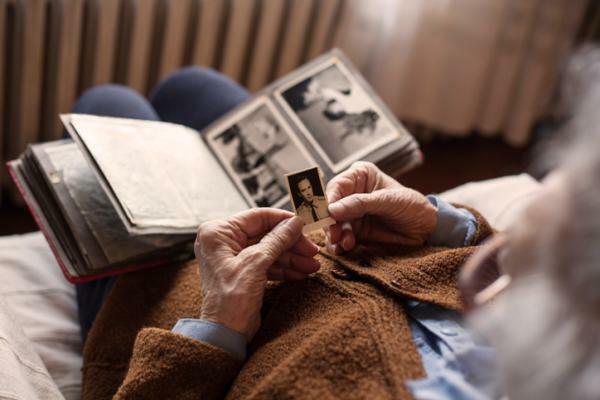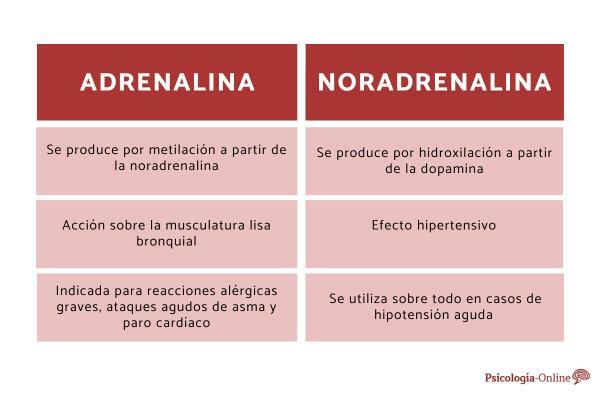
People have different types of memory and each one is responsible for the storage and processing of different types of memories. In this article, we'll talk about episodic memory and how it can be strengthened and prevented from deteriorating. This memory is the one that is related to autobiographical events, that is, the memory of a certain moment, of a place and the emotion associated with it... That is to say, it is the one that comes to mind in the first place when speaking from memory.
Keep reading Psychology-Online to discover what is episodic memory, examples and exercises to improve it.
The mind has two main types of memory: declarative or explicit memory and procedural or implicit memory.
- Declarative memory is the collection of memories related to past events.
- For its part, procedural memory is that which refers to memorizing the steps to perform a task, the different skills we learn, among others.
The episodic memory would belong to the declarative memory. Specific, episodic memory is one that is responsible for the storage and retrieval of memories of our biography in an explicit way
Surely, you remember some moments from your past: a birthday, a conversation with someone special, on your wedding day... and you will also remember different painful moments such as a love breakup or the day a loved one passed away. These are all examples of episodic memory.
All these moments are "episodes" of your life, parts of your biography, and you can remember them thanks to the work it does, through the medial temporal lobe and the prefrontal cortex, episodic memory.
At the time when that important event was happening to you, your brain was working to save it and that days, months, and even years later, you can remember it.
For this and any of the memory types, it is important to perform different types of exercise to stimulate them and make them work towards preventing dementias, such as Alzheimer's. This will not prevent you from having memory problems in the future, but if you end up developing dementia, it can cause it to progress more slowly or its symptoms to be milder.
Questions exercise
In cognitive stimulation workshops, on many occasions memory is worked through questions. These questions deal with not too distant memories in order to be more aware of the experiences and bring them to the present and thus force the memory and make it work. Some examples of questions to stimulate memory are:
- What did you eat last week?
- What was the weather yesterday?
- How did you choose the clothes you would wear today?
- What do you usually carry in your pockets?
- What was the last thing you saw on television yesterday?
As we can see, it is a way of evoking memories of situations and moments that on many occasions can be difficult. remember, since they are not too striking events, so we will make an effort to remember and thus reinforce the memory.
Reading texts
At other times, it is quite common for the professional to read a short story to the patient and then ask questions about the story. For example:
Paco got up every morning at 5 and went to work by bike. However, the other day it was raining so he decided to take the car. Everyone must have thought the same, so there was a big traffic jam, which is why Paco was late for work.
- How did Paco use to go to work?
- Why did your way of going change?
- Why am I late?
Stories make us form an image in our mind, in the same way as when we remember our own experience, so which is also a way of working on episodic memory by making the person have to remember details to respond to the questions.
Memories albums
A very practical exercise available to everyone is to take a photo album and explain what happened in each one. You can talk about the following aspects of each photograph:
- Who were the people in the photo?
- Who took the picture?
- What did you do after the photo? And before?
- Where was he?
- How did you decide to go there?
- Do you remember any conversation?
This exercise, however, is a bit more complex, although it is ideal for working on episodic memory at a deeper level. In this way, longer-term memory would be strengthened, that is, episodic memory would be worked more. In addition, it is a way of trying to preserve some memories that may have a certain sentimental value and an importance for the patient, whereas with the previous exercises the memories to evoke do not have that value.
Memory and music
A very fun and enjoyable exercise consists of putting on different songs and evoking memories from them. It can be done in two ways:
- On the one hand, the song may be for the special patient, it may be her wedding song, or one that reminds her of a trip... Then the advantage that music makes it easy to recall memories for the patient to relate them and, in this way, work on her episodic memory.
- The other way to work them is through author identification. You can narrate facts from his biography such as where he was from, how he died, if he went to a concert of the musician, if he was married... Logically, this exercise would be convenient to do with a special artist for the patient and from whom he / she could know said data.
This article is merely informative, in Psychology-Online we do not have the power to make a diagnosis or recommend a treatment. We invite you to go to a psychologist to treat your particular case.
If you want to read more articles similar to Episodic memory: what it is, examples and exercises to improve it, we recommend that you enter our category of Neuropsychology.


